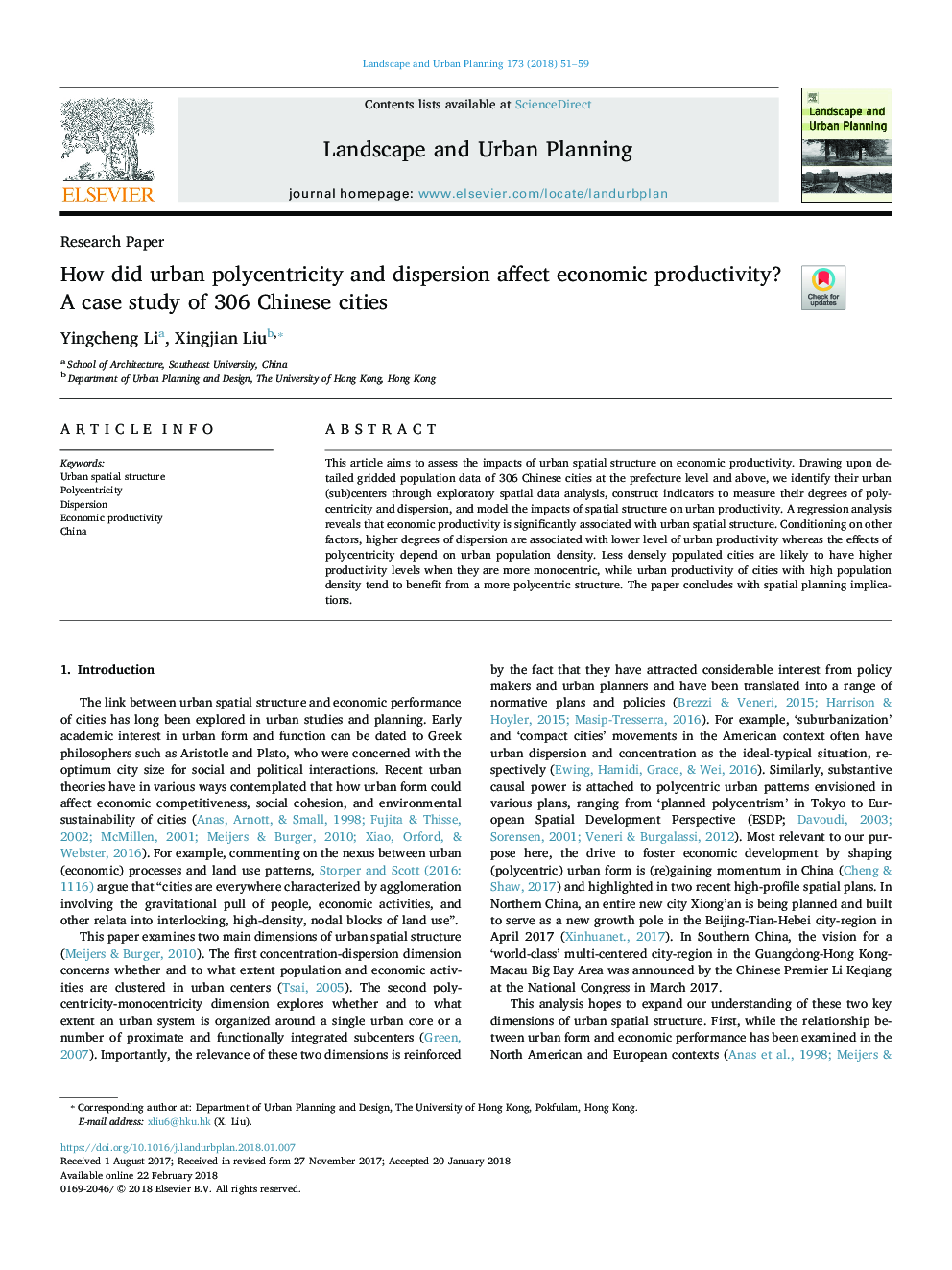| Article ID | Journal | Published Year | Pages | File Type |
|---|---|---|---|---|
| 7459841 | Landscape and Urban Planning | 2018 | 9 Pages |
Abstract
This article aims to assess the impacts of urban spatial structure on economic productivity. Drawing upon detailed gridded population data of 306 Chinese cities at the prefecture level and above, we identify their urban (sub)centers through exploratory spatial data analysis, construct indicators to measure their degrees of polycentricity and dispersion, and model the impacts of spatial structure on urban productivity. A regression analysis reveals that economic productivity is significantly associated with urban spatial structure. Conditioning on other factors, higher degrees of dispersion are associated with lower level of urban productivity whereas the effects of polycentricity depend on urban population density. Less densely populated cities are likely to have higher productivity levels when they are more monocentric, while urban productivity of cities with high population density tend to benefit from a more polycentric structure. The paper concludes with spatial planning implications.
Related Topics
Life Sciences
Agricultural and Biological Sciences
Ecology, Evolution, Behavior and Systematics
Authors
Yingcheng Li, Xingjian Liu,
